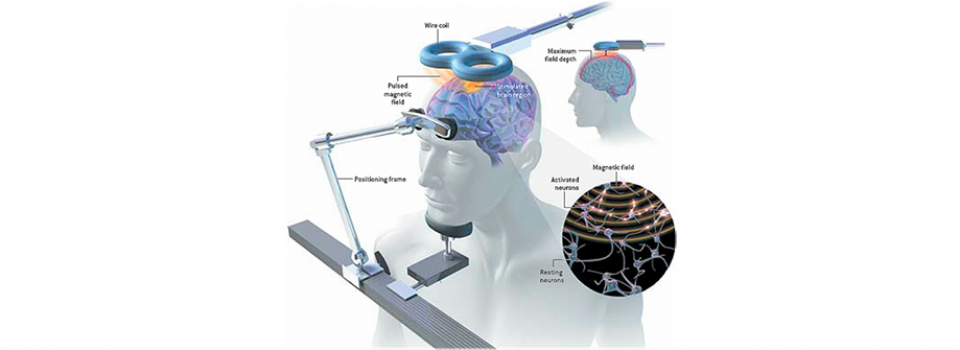Transcranial magnetic stimulation (TMS) is a magnetic method used to stimulate small regions of the brain. During a TMS procedure, a magnetic field generator, or “coil”, is placed near the head of the person receiving the treatment. The coil produces small electric currents in the region of the brain just under the coil via electromagnetic induction. The coil is connected to a pulse generator, or stimulator, that delivers electric current to the coil.
For neuropathic pain, for which there is little effective treatment, high-frequency (HF) repetitive TMS (rTMS) appears effective. For treatment-resistant major depressive disorder, HF-rTMS of the left dorsolateral prefrontal cortex (DLPFC) appears effective and low-frequency (LF) rTMS of the right DLPFC has probable efficacy. The Royal Australia and New Zealand College of Psychiatrists has endorsed rTMS for treatment resistant MDD.[14] As of October 2008, the US Food and Drug Administration authorized the use of rTMS as an effective treatment for clinical depression.


